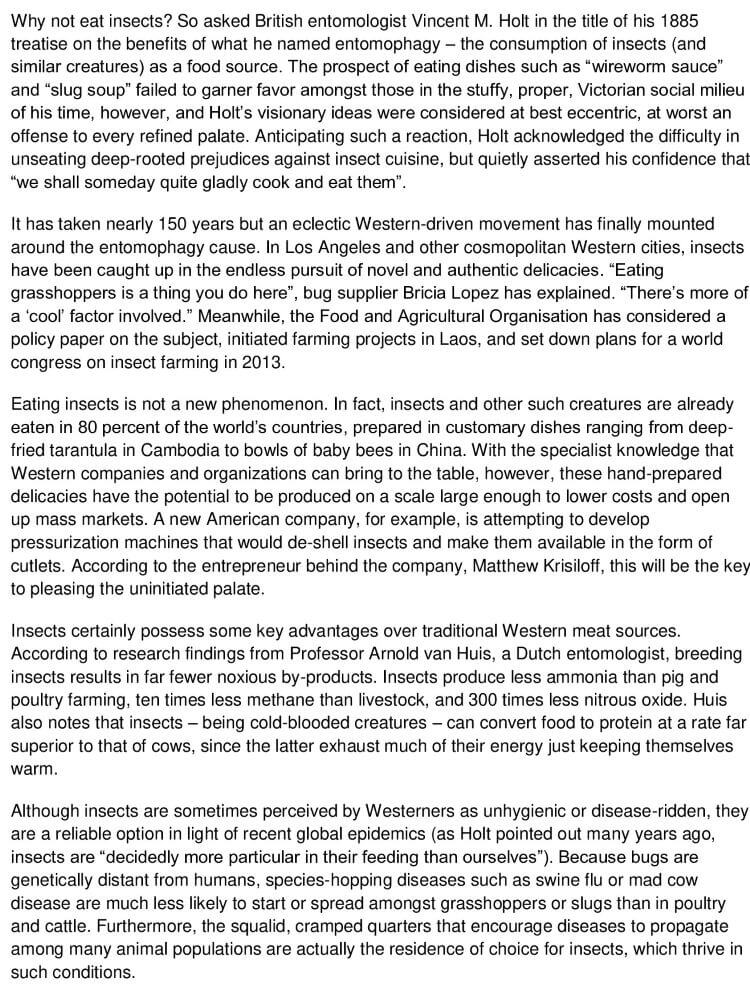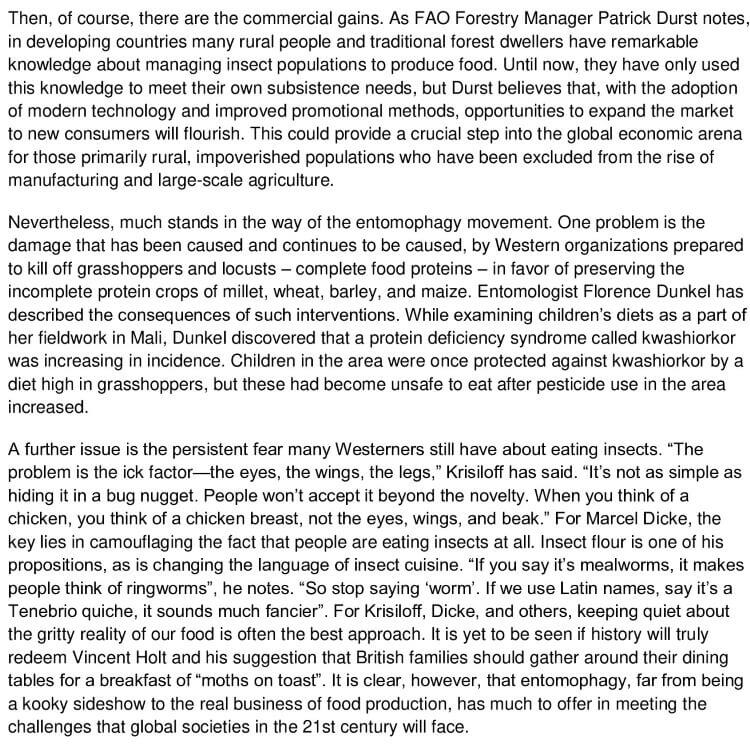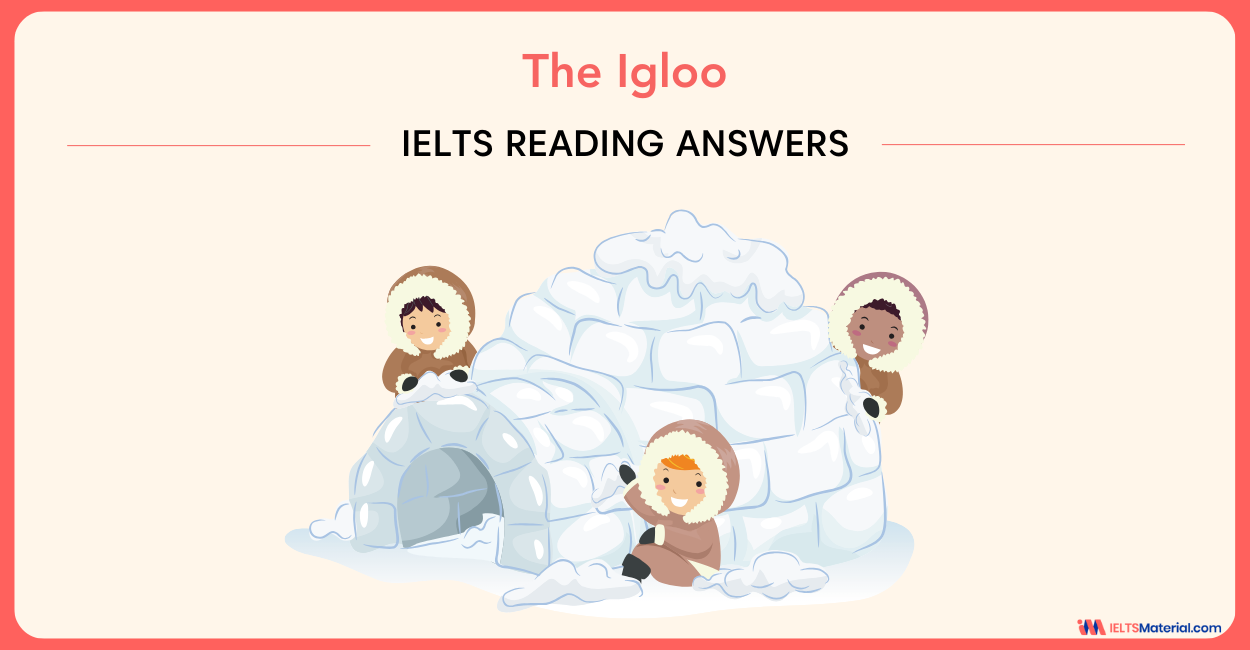Food for Thought - IELTS Reading Answers
9 min read
Updated On
-
Copy link
Find the Food for thoughts IELTS Reading Answers, in this article for you to crack it for an enhanced preparation! This exercise will give you an understanding of how to approach the IELTS Reading effectively!
Table of Contents

Limited-Time Offer : Access a FREE 10-Day IELTS Study Plan!
‘Food for Thought IELTS Reading’ is a passage that will help you understand what kind of reading passages you will encounter and the questions that you will be asked to solve. It is an IELTS Academic Reading passage that is a good resource for anyone who is preparing for the Reading test.
The key to achieving the desired band score in this module is to learn how to scan the given text, use keyword techniques, and locate the answer within the limited time provided.
In “Food for Thought IELTS Reading Answers”, there are various question types and if you want to familiarize yourself with all the question types, don’t hesitate to take an IELTS reading practice test.
Here are the types of question present in the Food for Thought IELTS Reading passage :
- IELTS Reading Matching Headings (Q. 14-21)
- IELTS Reading Notes Completion (Q. 22-26)
Reading Passage
Food for Thought


Want to learn how to read this passage within a few minutes? Join our IELTS online classes and save time!
IELTS Reading Questions on Food for Thought
Questions 14–21
Reading Passage has nine paragraphs, A–I.
Choose the correct heading for paragraphs A–H from the list of headings below.
Write the correct number, i–xi, in boxes 14–21 on your answer sheet.
List of Headings
i. A historical delicacy
ii. The poor may benefit
iii. Presentation is key to changing attitudes
iv. Environmentally friendly production
v. Tradition meets technology
vi. A cultural pioneer
vii. Western practices harm locals
viii. Good source of nutrients
ix. Growing popularity
x. A healthy choice
xi. A safety risk
14 Section A
15 Section B
16 Section C
17 Section D
18 Section E
19 Section F
20 Section G
21 Section H
Questions 22–26
Complete the notes below.
Choose NO MORE THAN THREE WORDS from the passage for each answer.
Write your answers in boxes 22–26 on your answer sheet.
Van Huis
- Insects are cleaner & do not release as many harmful gases
- Insects use food intake economically in the production of protein as they waste less than 22…………………
Durst
- Traditional knowledge could be combined with modern methods for mass production instead of just covering 23 …………………
- This could help 24………………… people gain access to world markets.
Dunkel
- Due to increased 25…………………, more children in Mali are suffering from 26…………………
For more passages like "Food for Thought reading answers", check out the IELTS reading guide.
Answers for Food for Thoughts IELTS Reading Answers with Location and Explanation
Take a look at the detailed answers with location and explanation above to enhance your reading skills for a high IELTS band score.
14 Answer: Ⅵ
Question type: Match headings
Answer location: Paragraph A, lines 1-3
Answer explanation: “Why not eat insects? So asked British entomologist Vincent M. Holt in the title of his 1885 treatise on the benefits of what he named entomophagy – the consumption of insects (and similar creatures) as a food source.” These lines clearly suggest that Vincent Holt was a cultural pioneer (someone who starts something) in the terms of adding insects to our meals.
15 Answer: Ⅸ
Question type: Match headings
Answer location: Paragraph B, lines 1-4
Answer explanation: “It has taken nearly 150 years but an eclectic Western-driven movement has finally mounted around the entomophagy cause. In Los Angeles and other cosmopolitan Western cities, insects have been caught up in the endless pursuit of novel and authentic delicacies. “Eating grasshoppers is a thing you do here”, but supplier Bricia Lopez has explained.” This suggests that over the years Entomophagy has been gaining ground in terms of popularity and people have started including insects in their diet now. Hence, the option of growing popularity is correct.
16 Answer:Ⅴ
Question type: Match headings
Answer location: Paragraph C, lines 6-9
Answer explanation: “A new American company, for example, is attempting to develop pressurization machines that would de-shell insects and make them available in the form of cutlets. According to the entrepreneur behind the company, Matthew Krisiloff, this will be the key to pleasing the uninitiated palate.” This highlights the benefits of utilizing technology and harnessing innovation to include insects as a part of cultural cuisines.
17 Answer:Ⅳ
Question type: Match headings
Answer location: Paragraph D, lines 2-4
Answer explanation: “According to research findings from Professor Arnold van Huis, a Dutch entomologist, breeding insects results in far fewer noxious by-products. Insects produce less ammonia than pig and poultry farming, ten times less methane than livestock, and 300 times less nitrous oxide.” These points clearly highlight the benefits of consuming insects in comparison to meat. It clearly highlights how beneficial and safe consuming insects is as far as environmental safety is concerned.
18 Answer:Ⅹ
Question type: Match headings
Answer location: Paragraph E, lines 3-8
Answer explanation: “Because bugs are genetically distant from humans, species-hopping diseases such as swine flu or mad cow disease are much less likely to start or spread amongst grasshoppers or slugs than in poultry and cattle. Furthermore, the squalid, cramped quarters that encourage diseases to propagate among many animal populations are actually the residence of choice for insects, which thrive in such conditions.” These lines explain the upper hand of consuming insects or entomophagy taking health into consideration. It illustrates how important it is to choose insects over farm animals for their meat when it comes to consumption.
19 Answer:Ⅱ
Question type: Match headings
Answer location: Paragraph F, lines 1-6
Answer explanation: “As FAO Forestry Manager Patrick Durst notes, in developing countries many rural people and traditional forest dwellers have remarkable knowledge about managing insect populations to produce food. Until now, they have only used this knowledge to meet their own subsistence needs, but Durst believes that, with the adoption of modern technology and improved promotional methods, opportunities to expand the market to new consumers will flourish.” This suggests that owing to the traditional heritage of poor and tribal people (forest dwellers), the indigent population knows how to consume insects and how to make them edible and safe for consumption. In that case, if the market for insect consumption flourishes, this would improve the lifestyle of impoverished people as well.
20 Answer:Ⅶ
Question type: Match headings
Answer location: Paragraph G, lines 1-5
Answer explanation: “One problem is the damage that has been caused, and continues to be caused, by Western organizations prepared to kill off grasshoppers and locusts – complete food proteins – in favor of preserving the incomplete protein crops of millet, wheat, barley, and maize. Entomologist Florence Dunkel has described the consequences of such interventions.” This clearly highlights how some western malpractices of using pesticides and disinfecting the farms have contributed to diseases among children and the general population.
21 Answer:Ⅲ
Question type: Match headings
Answer location: Paragraph H, lines 4-9
Answer explanation: “For Marcel Dicke, the key lies in camouflaging the fact that people are eating insects at all. Insect flour is one of his propositions, as is changing the language of insect cuisine. “If you say it’s mealworms, it makes people think of ringworms”, he notes. “So stop saying ‘worm’. If we use Latin names, say it’s a Tenebrio quiche, it sounds much fancier”. For Krisiloff, Dicke, and others, keeping quiet about the gritty reality of our food is often the best approach.” This shows how making things visually and auditory pleasing could change the game as far as accepting a novel dish is concerned. Making something presentable would increase the acceptance of insects as dishes.
22 Answer: Energy
Question type: Short Answer Questions
Answer location: Paragraph D, lines 5-8
Answer explanation: “Huis also notes that insects – being cold-blooded creatures – can convert food to protein at a rate far superior to that of cows, since the latter exhaust much of their energy just keeping themselves warm.” This highlights the point of lesser energy consumption by insects as compared to animals. This makes insects beneficial to be consumed.
23 Answer: Subsistence needs
Question type: Short Answer Questions
Answer location: Paragraph F, lines 1-6
Answer explanation: “ As FAO Forestry Manager Patrick Durst notes, in developing countries many rural people and traditional forest dwellers have remarkable knowledge about managing insect populations to produce food. Until now, they have only used this knowledge to meet their own subsistence needs, but Durst believes that, with the adoption of modern technology and improved promotional methods, opportunities to expand the market to new consumers will flourish.” This suggests that if modern technologies support conventional entomophagy and the market of entomophagy widens, it would improve the lifestyles of the poor and that shall not constraint the poor to mere survival.
24 Answer: Rural/impoverished
Question type: Short Answer Questions
Answer location: Paragraph F, lines 6-8
Answer explanation: “This could provide a crucial step into the global economic arena for those primarily rural, impoverished populations who have been excluded from the rise of manufacturing and large-scale agriculture.” This is somewhat the similar point as was suggested prior that if modern technologies support conventional entomophagy and the market of entomophagy widens, it would improve the lifestyles of the poor and that shall not constraint the poor to mere survival.
25 Answer: Pesticide use
Question type: Short Answer Questions
Answer location: Paragraph G, lines 5-9
Answer explanation: “While examining children’s diets as a part of her fieldwork in Mali, Dunkel discovered that a protein deficiency syndrome called kwashiorkor was increasing in incidence. Children in the area were once protected against kwashiorkor by a diet high in grasshoppers, but these had become unsafe to eat after pesticide use in the area increased.” This suggests that due to improper and insufficient diet brought about by infecting crops with pesticides, the children were afflicted by protein deficiency.
26 Answer: Protein deficiency
Question type: Short Answer Questions
Answer location: Paragraph G, lines 5-9
Answer explanation: “While examining children’s diets as a part of her fieldwork in Mali, Dunkel discovered that a protein deficiency syndrome called kwashiorkor was increasing in incidence. Children in the area were once protected against kwashiorkor by a diet high in grasshoppers, but these had become unsafe to eat after pesticide use in the area increased.” This again implies that owing to an inadequate diet as the pesticides curbed the number of edible vegetables as well as the grasshoppers (as they were infected by pesticides), the children couldn’t meet the protein requirement and this caused them to go through Kwashiorkor ( a protein deficiency).
Tips for Answering the Question Types in Food for Thoughts IELTS Reading Answers
Now let’s get started with the IELTS exam preparation tips for each question type. It will help you understand how to approach each question type that are given above.
Matching Headings:
You must match the heading in this type of question to the appropriate paragraph or reading segment in the text. Your ability to figure out the paragraph’s key concept and its supporting ideas will be put to the test.
- Take your time to rephrase the potential headings’ keywords.
- Find the main idea by scanning and skimming the paragraphs. Sometimes the essential idea of the paragraph is expressed in the header.
- For clarification on the paragraph’s main idea, see the first and last sentences. Likewise, quickly scan the middle of the paragraph using the IELTS Reading keyword techniques to make sure you comprehend it.
- Don’t try to match words. Your primary goal is to match a correct paragraph.
- Choose the heading that best fits the paragraph after reading it again if two seem to be appropriate.
- The number of headings will always be greater than the number of paragraphs or sections. Therefore, some headings will never be utilized.
Note Completion:
To solve the note completion questions of the IELTS Reading, you will be asked to fill in the blanks in a small passage given in the form of a note with the relevant words or numbers. So, let us revise the strategies.
- Read the instructions carefully. It will help you determine the word limit (no more than two, one word, etc) and important terms like ‘using words from the text’ or ‘from the text’. You have to follow these strictly.
- Read the incomplete sentences first. Also, think about keywords and how they could be represented by synonyms or paraphrasing.
- Locate where the information is by scanning quickly. If you can’t, move on.
- Study the reading text by using the skimming and scanning techniques. It will help to establish the answer quickly. When scanning for your answer, make sure you are thinking about paraphrasing and synonyms.
- The answers appear in the same order as the questions. Also, check your spelling and remember that your answer should be grammatically correct.
Great work on attempting to solve the ‘Food for thought’ IELTS reading passage! To crack your IELTS Reading in the first go, try solving more of the Recent IELTS Reading Passages.
Check More IELTS Reading Answers
Practice IELTS Reading based on question types

Start Preparing for IELTS: Get Your 10-Day Study Plan Today!
Explore other Reading Topics

Kasturika Samanta

Kasturika Samanta

Kasturika Samanta

Kasturika Samanta
Recent Articles

Nehasri Ravishenbagam

Haniya Yashfeen

Haniya Yashfeen

Haniya Yashfeen




Post your Comments